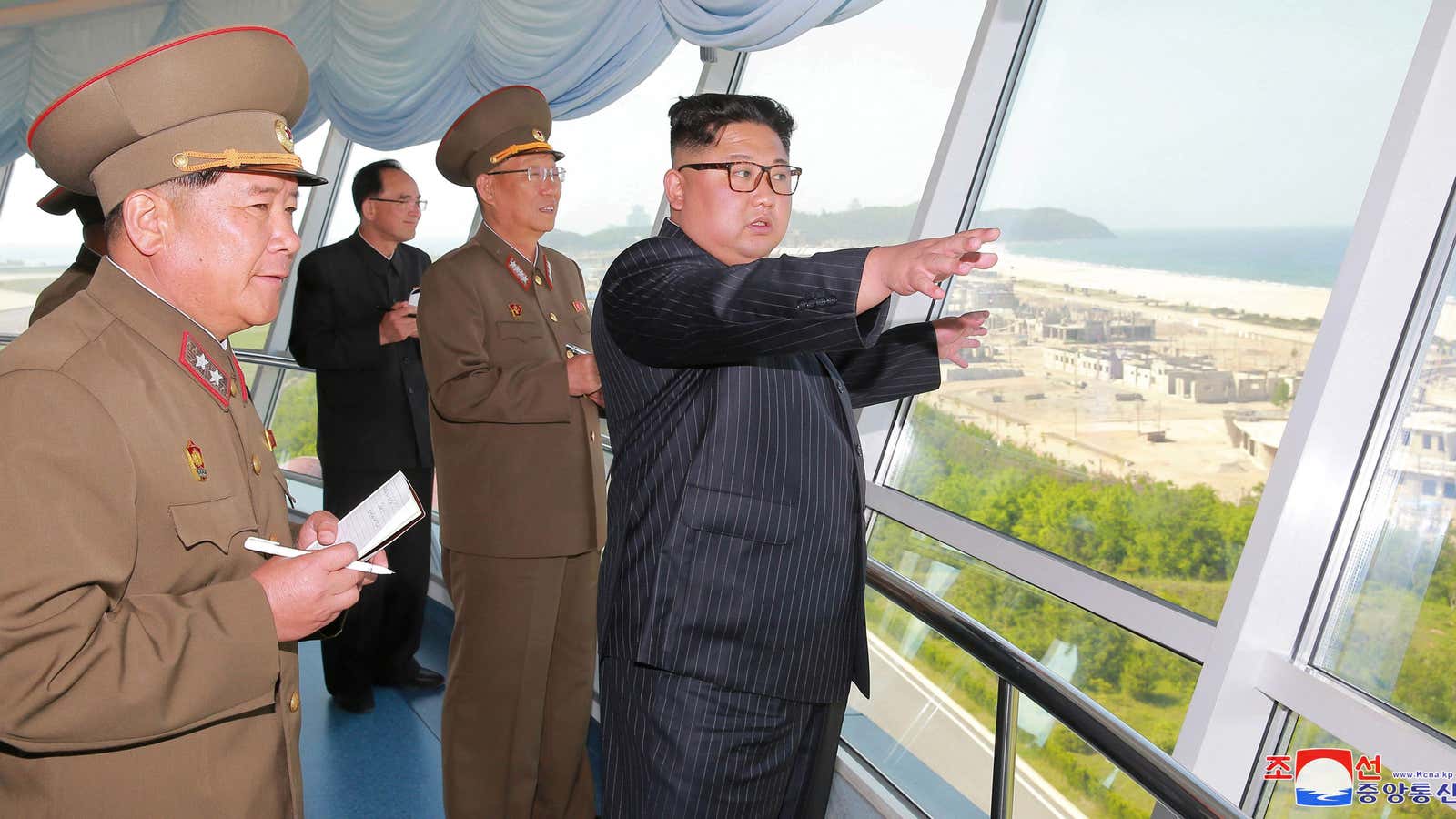At the April 27 summit between the two Koreas, some observers commented on the unusual sight of members of North Korea’s top military brass saluting South Korean president Moon Jae-in. Now, just days ahead of the much-anticipated summit between North Korean leader Kim Jong Un and US president Donald Trump, the men who made that striking gesture are no longer in their jobs.
North Korean leader Kim Jong Un has reshuffled his top military leadership, replacing defense minister Pak Yong Sik and army chief of staff Ri Myong Su, according to reports from Japanese and South Korean media over the weekend. Given the country’s opacity, it’s difficult to know exactly what’s behind the changes—or if they had anything to do with that salute, which was not reciprocated by South Korean military officials. (Kim got a handshake and a nod instead.)
Analysts have speculated that the changes represent a move by Kim to install more moderate voices in the military, possibly to pave the way for concessions over the country’s nuclear program that may come out of the summit with Trump. Meanwhile, the Washington Post had earlier reported that North Korea had expressed concerns over a possible coup back in Pyongyang while Kim travels to Singapore—and some saw the moves as intended to consolidate Kim loyalists at the top of the military. Michael Madden, of the North Korea Leadership Watch blog, called the newly promoted men “top Kim Jong Un guys.“
Writing for Reuters, Wellesley College political science professor Katharine Moon noted that the April salute signaled the military supported Kim’s diplomatic thaw with South Korea and the US. “The message from the optics was clear: Kim’s DMZ-crossing and diplomatic engagement with arch-enemies have the full backing of the armed forces,” she wrote. But, she added, it was also possible that new chiefs “simply are politically more savvy and technically more competent to assist in the summit diplomacy and the upcoming high-level negotiations with the South Korean military.”
Here are the key new members of the top brass:
- No Kwang Chol is the new defense minister. No is in his late thirties, making him only a few years older than Kim Jong Un himself. He replaces Pak Yong Sik, who’s in his late sixties and was appointed in 2015. No earlier headed the Workers’ Party’s Second Economic Committee, which oversees defense production, including in military and nuclear programs. He joined the ruling party’s central committee two years ago. In 2014, he accompanied a top Kim aide to Russia.
- Ri Yong Gil, chief of general staff of the Korea Peoples Army (KPA), replaces Ri Myong Su, who had been a military aide to Kim’s father. This appears to be Ri Yong Gil’s second stint in the position leading the armed services, after an earlier appointment in 2013. A South Korean official in early 2016 said that Ri Yong Gil had been executed, but Ri later turned up at a party congress that year. Ri is about 20 years younger than the man he replaced, who was in his eighties and had lived through the Korean War.
- Those two appointments came after the promotion of Kim Su Gil (shown in the photo above, with Kim Jong Un). A four-star general aged 68 or 69, he replaced Kim Jong Gak as head of the KPA’s General Political Bureau (GPB) in late May. His predecessor had been in charge of the GPB, which manages military personnel and maintains party control over the army, for just four months. Kim Su Gil reportedly accompanied Kim Jong Un on a May visit to China to meet with Chinese leader Xi Jinping, and has helped him consolidate his power since early in his rule.
